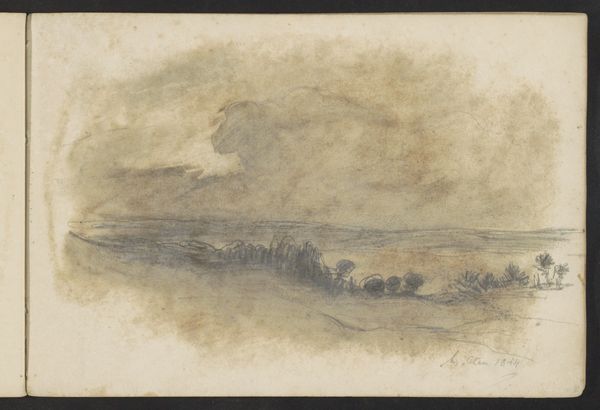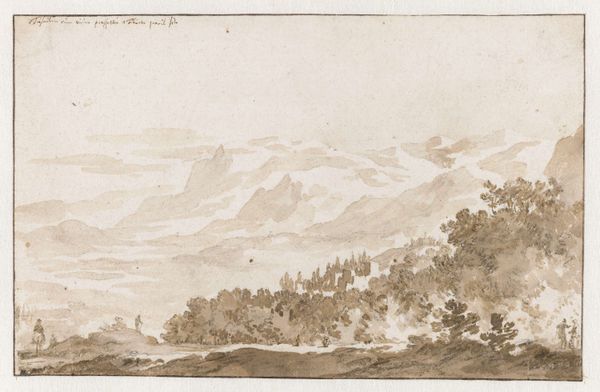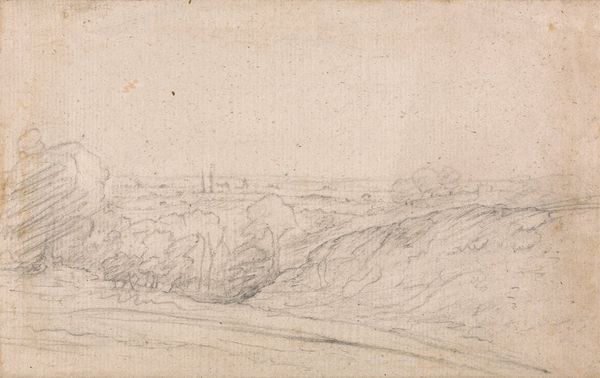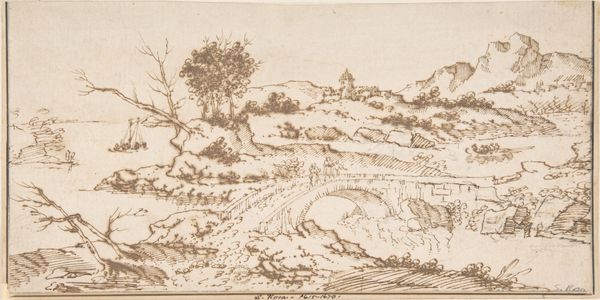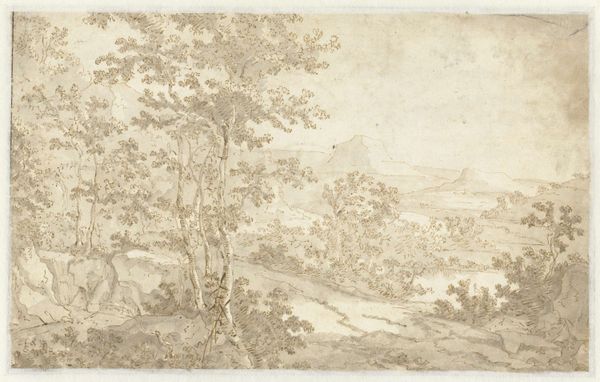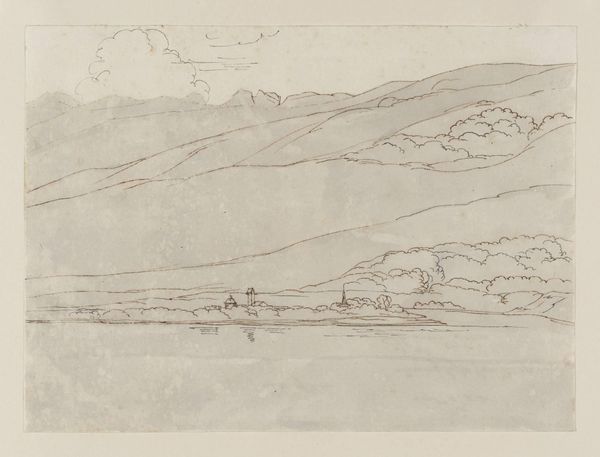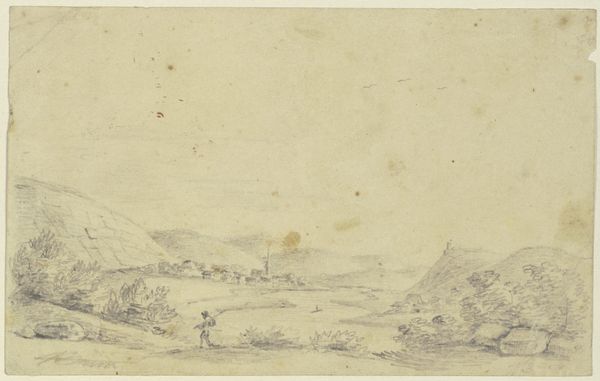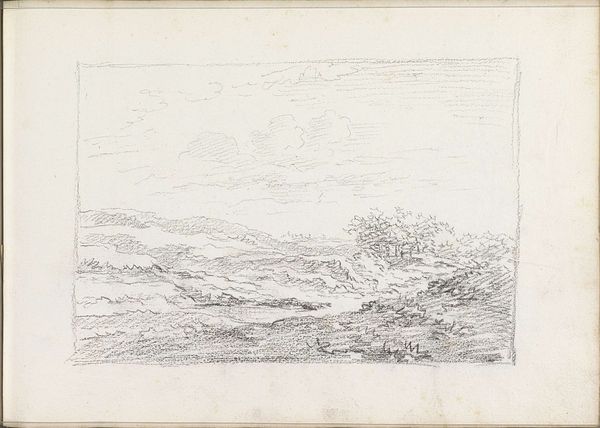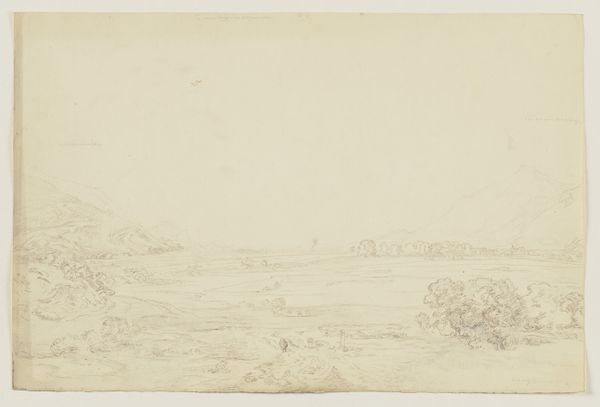
drawing, paper, pencil, graphite, charcoal
#
drawing
#
pencil sketch
#
landscape
#
charcoal drawing
#
paper
#
romanticism
#
pencil
#
graphite
#
charcoal
#
realism
Copyright: Rijks Museum: Open Domain
Curator: This drawing, housed here at the Rijksmuseum, is entitled "Heuvellandschap met bomen," or "Hilly Landscape with Trees," and was created by Johannes Tavenraat around 1843-1844, rendered in graphite, charcoal, and pencil on paper. Editor: It's immediately striking how spare and economical the composition is, isn’t it? The artist really distills the landscape to its essential forms using just a few delicate lines and smudges. There is a quietness to this work that I find remarkable. Curator: Indeed. Tavenraat was part of a larger artistic milieu in the Netherlands that saw landscape painting not just as representation, but as a reflection of national identity. The rolling hills evoke a sense of calm and order, appealing to middle class sensibilities in that era. Editor: And the limited tonal range almost reduces the scene to a collection of textures: the soft undulations of the hills, the clustered foliage, even the rough surface of the paper itself contributes to the overall visual effect. You could practically feel the grain of the charcoal between your fingers. Curator: Considering the socio-economic changes happening during that period, particularly with increasing industrialization, it is likely that this idyllic portrayal provided a sort of visual counterpoint – an idealized version of nature that was increasingly under threat. Think of it as a quiet rebellion against the changing times, one manifested on a humble sheet of paper. Editor: That's a fascinating point. I was so absorbed by the composition that I overlooked the work's deeper cultural meaning. But from an aesthetic perspective, observe the spatial arrangement, which creates depth and directs the eye from the foreground elements—those evocative smudges—to the gently sloping hills on the horizon. Curator: Tavenraat and other artists, especially in circles tied to the Felix Meritis society, were crucial in shaping how the Netherlands saw itself. Their commitment to "plein air" sketching became something of a national tradition. The light plays a pivotal role. What might at first seem to be a deficiency in detail can, in fact, reflect a mindful commitment to truthfulness, which echoes larger discourses of artistic authenticity. Editor: Ultimately, for me, the beauty lies in that delicate balance between observation and expression, how it transforms an unremarkable scene into a testament to the enduring allure of simplicity in art. Curator: Absolutely. And by examining such works, we are able to better understand how the social role of art and artistic expression served as anchors for cultural and societal values.
Comments
No comments
Be the first to comment and join the conversation on the ultimate creative platform.
